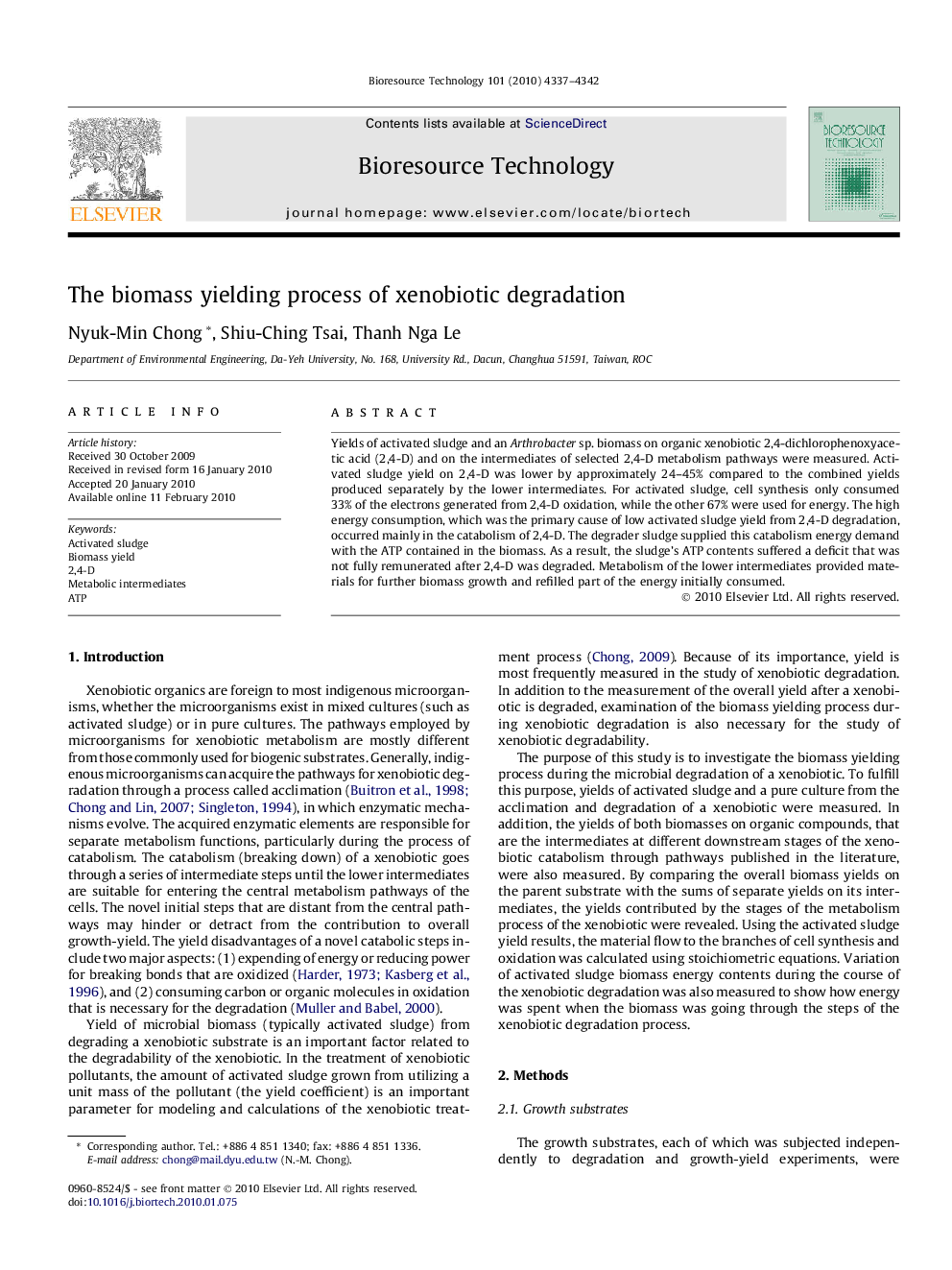| Article ID | Journal | Published Year | Pages | File Type |
|---|---|---|---|---|
| 10395599 | Bioresource Technology | 2010 | 6 Pages |
Abstract
Yields of activated sludge and an Arthrobacter sp. biomass on organic xenobiotic 2,4-dichlorophenoxyacetic acid (2,4-D) and on the intermediates of selected 2,4-D metabolism pathways were measured. Activated sludge yield on 2,4-D was lower by approximately 24-45% compared to the combined yields produced separately by the lower intermediates. For activated sludge, cell synthesis only consumed 33% of the electrons generated from 2,4-D oxidation, while the other 67% were used for energy. The high energy consumption, which was the primary cause of low activated sludge yield from 2,4-D degradation, occurred mainly in the catabolism of 2,4-D. The degrader sludge supplied this catabolism energy demand with the ATP contained in the biomass. As a result, the sludge's ATP contents suffered a deficit that was not fully remunerated after 2,4-D was degraded. Metabolism of the lower intermediates provided materials for further biomass growth and refilled part of the energy initially consumed.
Related Topics
Physical Sciences and Engineering
Chemical Engineering
Process Chemistry and Technology
Authors
Nyuk-Min Chong, Shiu-Ching Tsai, Thanh Nga Le,
